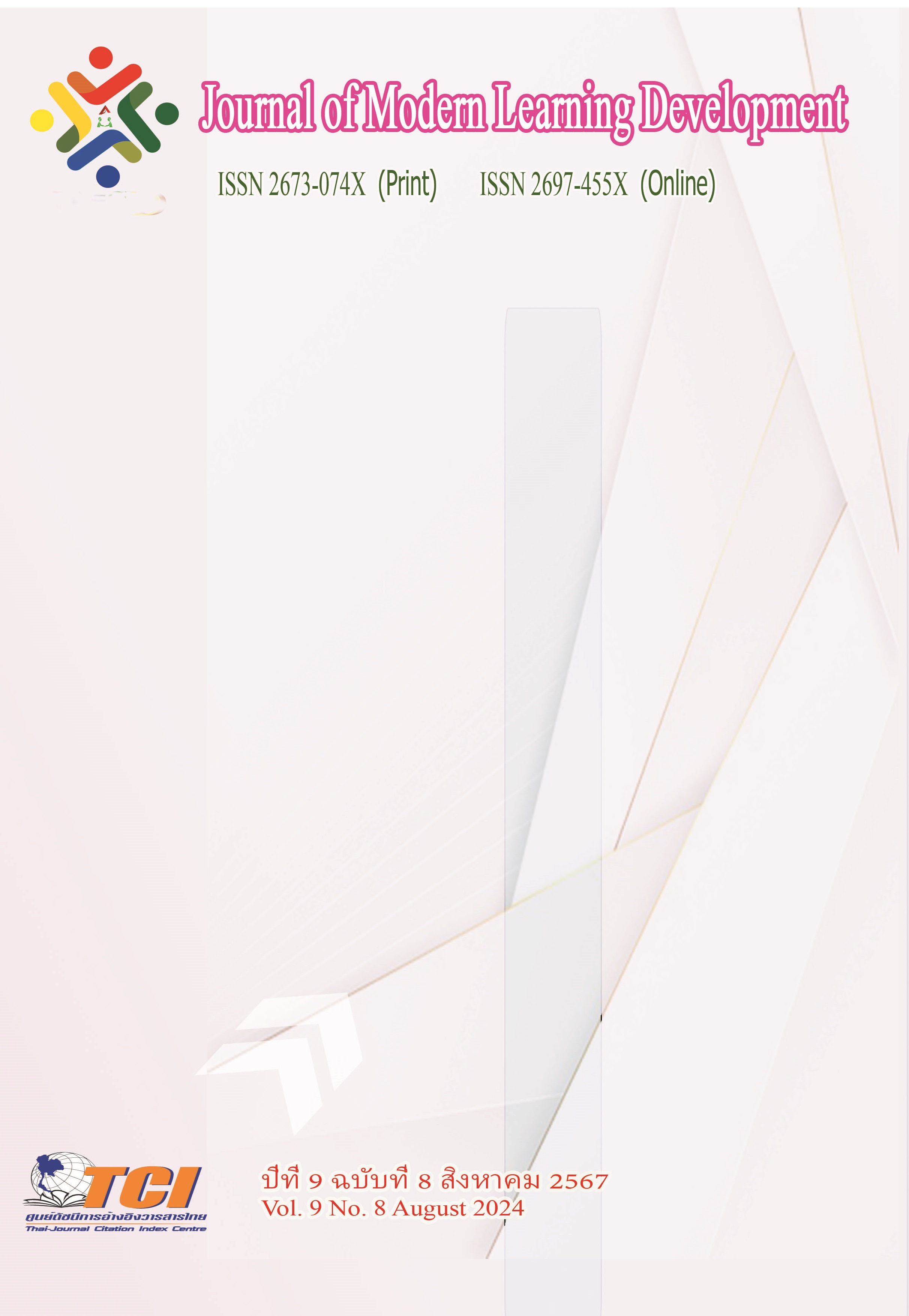The Development of Learning Activities by Using Contex- Based Learning to Promote Mathematical Literacy for Grade 7 Students
Main Article Content
Abstract
The purposes of this research were: 1) to formulate and assess the efficacy of context-based learning activities to promote mathematical literacy for Grade 7 students, utilizing a performance criterion of 75/75; 2) to compare the mathematical literacy of students before and after participating in the context-based learning activities; and 3) to examine students’ satisfaction with the context-based learning to promote their mathematical literacy for Grade 7 students. The sample groups seventh-grade students from Phothithammasuwat School.The research instruments were context-based learning activities, pretests, and posttests to assess mathematical literacy utilizing context-based learning activities and student satisfaction surveys. The statistics used in data analysis were mean, standard deviation, and efficiency values , and t-test dependent.
The research results revealed that:
1. The context-based learning activities consisted of five steps: 1) Connecting relationships 2) Learning from experience Step 3) Applying knowledge 4) Collaboration, 5) Transferring knowledge to other contexts. The activities were deemed highly appropriate ( = 4.77, S.D. = 0.39), the lesson plan were rated as highly appropriate ( = 4.62, S.D. = 0.52), and the efficiency was 75.60/75.79.
2. The mathematical literacy of students post-intervention was significantly higher than pre-intervention, at a significance level of .05.
3. The satisfaction with the context-based learning activities aimed at enhancing mathematical literacy was very high after the intervention ( = 4.56, S.D. = 0.60).
Article Details
References
กระทรวงศึกษาธิการ. (2551). หลักสูตรแกนกลางการศึกษาขั้นพื้นฐาน พุทธศักราช 2551. กรุงเทพมหานคร: โรงพิมพ์ชุมนุมสหกรณ์การเกษตรแห่ง ประเทศไทย
กฤษณา สร้อยทิพย์. (2565), การพัฒนาการจัดการเรียนรู้โดยใช้บริบทเป็นฐานร่วมกับกระบวนการโพลยา เพื่อส่งเสริม ความสามารถในการแก้ปัญหาทางคณิตศาสตร์ เรื่อง อัตราส่วน สัดส่วน และร้อยละ สำหรับนักเรียนชั้นมัธยมศึกษาปีที่ 1. หลักสูตรการศึกษามหาบัณฑิต. สาขาวิชาวิจัยและประเมินทางการศึกษา. บัณฑิตวิทยาลัย: มหาวิทยาลัยนเรศวร.
ล้วน สายยศ และ อังคณา สายยศ. (2536). เทคนิคการวิจัยทางการศึกษา. (พิมพ์ครั้งที่ 3). กรุงเทพมหานคร: สำนักพิมพ์ศูนย์ส่งเสริมวิชาการ.
ศูนย์ดำเนินงาน PISA แห่งชาติ สถาบันส่งเสริมการสอนวิทยาศาสตร์และเทคโนโลยี. (2564). ผลการประเมิน PISA 2018 การอ่าน คณิตศาสตร์ และวิทยาศาสตร์. กรุงเทพมหานคร: สถาบันส่งเสริมการสอนวิทยาศาสตร์และเทคโนโลยี.
สถาบันส่งเสริมการสอนวิทยาศาสตร์และเทคโนโลยี. (2563). ความฉลาดรู้ด้านคณิตศาสตร์ (Mathematical literacy). ออนไลน์. สืบค้นมื่อ 20 พฤศจิกายน 2566. แหล่งที่มา: https://pisathailand.ipst. ac.th/about-pisa/mathematical_literacy_framework/
สถาบันส่งเสริมการสอนวิทยาศาสตร์และเทคโนโลยี. (2561). คู่มือการใช้หลักสูตรกลุ่มสาระการเรียนรู้คณิตศาสตร์ (ฉบับปรับปรุง พ.ศ.2560) ตามหลักสูตรแกนกลางการศึกษาขั้นพื้นฐานพุทธศักราช 2551. กรุงเทพมหานคร: สสวท.
สถาบันส่งเสริมการสอนวิทยาศาสตร์และเทคโนโลยี. (2566). ผลการประเมิน PISA 2022. ออนไลน์. สืบค้นเมื่อ 20 พฤศจิกายน 2566. แหล่งที่มา : https://pisathailand.ipst.ac.th/news-21/
Crawford, M. L. (2001). Teaching contextually: Research, rationale, and techniques for improving student motivation and achievement in mathematics and science. Texas: CCI Publishing
Organisation for Economic Co-operation and Development [OECD]. (2019). PISA 2018 Assessment and Analytical Framework. Paris: OECD Publishing. Retrieved October 27, 2023, from https://www.oecd.org/education/school/programmeforinternation alstudentassessmentpisa/33694881.pdf
Syafitri, A., Huda, N., & Haryanto. (2021). Problem-based learning model: It's effect on mathematical literacy ability based on students' visual verbal ability. Al- Jabar: Jurnal Pendidikan Matematika. 12 (2), 427-436.


